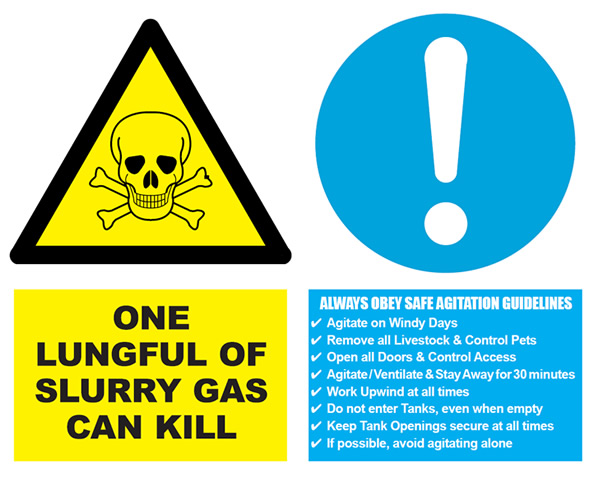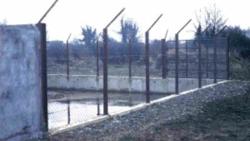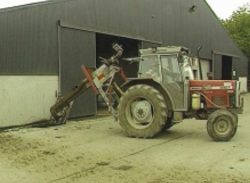Slurry Safety

Slurry presents two particular safety and health problems - drowning and gas poisoning. Drowning is by far the most common cause of death involving slurry. Children and the elderly are at particular risk. In the period 2000-2010, 30% of child fatal accidents on farms were caused by drowning in slurry or water. In the same period 8% of deaths to elderly farmers were caused by drowning.
Smell is no indicator of the absence of gas, as many gases are odourless. Hydrogen sulphide has a 'rotten egg' smell at low levels, but cannot be smelt at higher levels. High levels can be released when slurry is agitated. One breath or lung-full at this level causes instant death.
- Open slurry tanks should be protected by an unclimbable fence or wall at least 1.8 metres high, with locked gates

- When the tank has to be emptied, consider having an adequately constructed access platform with safety rails
- Covered or slatted tanks require access manholes that children cannot open easily. Fit a safety grid below the manhole to give secondary protection. All slurry tanks should be adequately fenced
- Evacuate all livestock and make sure no person or animal is in or near the building
- Do not allow slurry to rise within 300mm of the slats or tank covers
- Avoid smoking and naked flames as the gas mixture can be highly flammable
- Never enter a tank for any reason - gases can build up and remain in partially emptied tanks above the slurry
- Never enter the slurry tank or any confined space unless you are wearing suitable breathing apparatus and/ or a harness attached to a lifeline controlled by at least two other adults positioned outside of the area
- Put up warning signs to warn of the dangers when working with slurry
- Scrape holes on outdoor lagoons should be adequately protected
- Cover all slurry tank manhole openings
- Beware of the risk of back injury if you need to lift slats in the shed
- Agricultural contractors must be aware of the dangers of working with slurry and should ensure that they work safely at all times
- Use outdoor agitation points where possible - one lung-full of slurry gas can kill
- Only agitate where there is good air movement

- Evacuate and ventilate before you agitate
- Open all doors and outlets to provide a draft
- Avoid vigorous agitation in confined spaces
- At least two people should be present and should stand up-wind
- Keep all people away from the agitation point for 30 minutes after starting agitation
- Keep children and elderly persons away from the area when agitating
- Never stand over slats or near tank access points when agitation is in progress
- Guard the PTO on the slurry tanker and agitator– do not use unless correctly guarded. A high proportion of PTO entanglements occur when using slurry tankers

